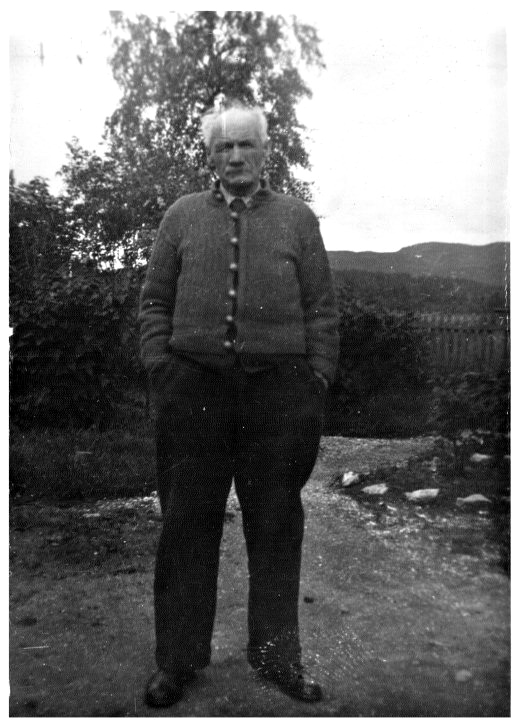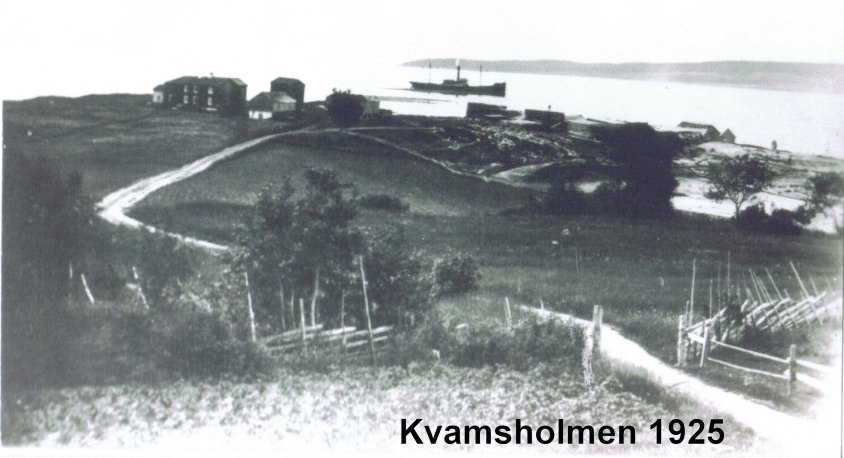The Kvam Islet
This is probably the oldest of the Kvam properties. It shows up in records as early as 1701, but is probably much older.
In 1865 the place was purchased by Anton Grøn. He also bought Litlmarka and Holmsveet and merged the places into one farm. Several of the Grøn family lived here at Kvamsholmen until 1917 - when Arnt Folstad bought the place.
Around 1920 Anton Haugberg built a sawmill on the mountain west of the farm. Much of the timber arrived by sea, and a log boom was cresated down at the beach. There was also a steamship quay here.
To the east of the farm there is a small islet that becomes visible at low tide. This islet is called "Saltbuskjæret", indicating that there may have been a salt extraction here.
The “stor-drivern”* Anton Haugberg
*(a person who runs business or anything in a big way - a driving force to be reckoned with)
While we are here at Kvamsholmen we must mention "Gamel - Hauberin/Old Hauberin" (Anton Haugberg) and the sawmill he built here in 1912. There are many stories about Anton, and most people say that he wanted things to happen fast. Something had to happen all the time, and preferably something new and big, and one of his projects was the sawmill at Kvamsholmen.

Much of the timber came by sea, and was stored within a log boom down the bay. The processed timber was shipped out from the quay here at Kvamsholmen. The mill was large and modern at that time. As a driving force there was a stationary mobile engine, "Sleipner", which was bolted to the rock and encased in a small house. The engine gave power to a double split saw, a cutting saw, and to pull the log up from the boom. The timber was then cut into planks, stacked and dried.
The sawmill employed 10-12 guys, who needed food - there was therefore a separate "cookhouse" where food was prepared and served by Anton's daughters (Agnes, Ragnhild and Tina).
In 1933 Anton sold the farm to his son Johannes, and moved to Ekne where he bought the sawmill Sjøenget.

